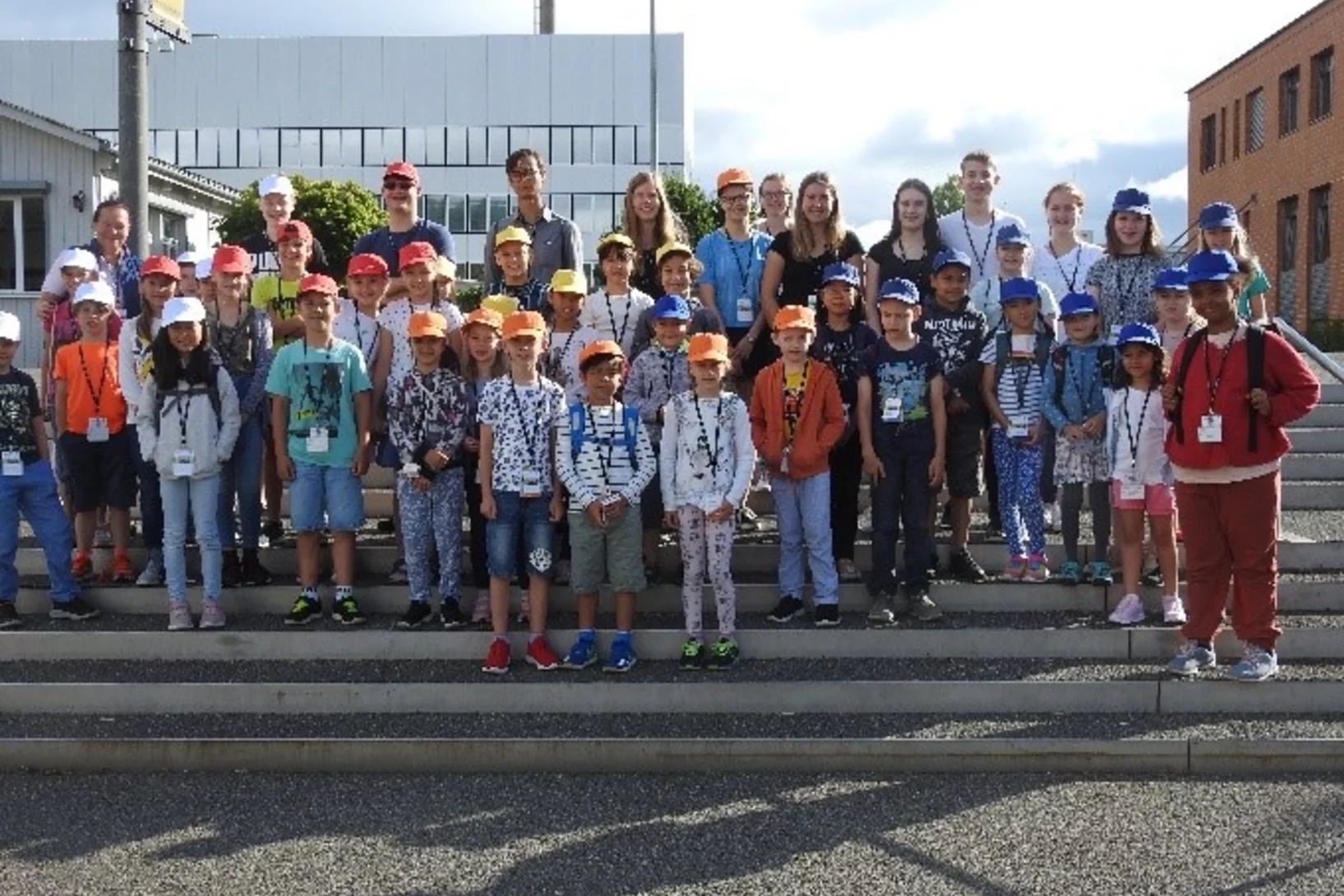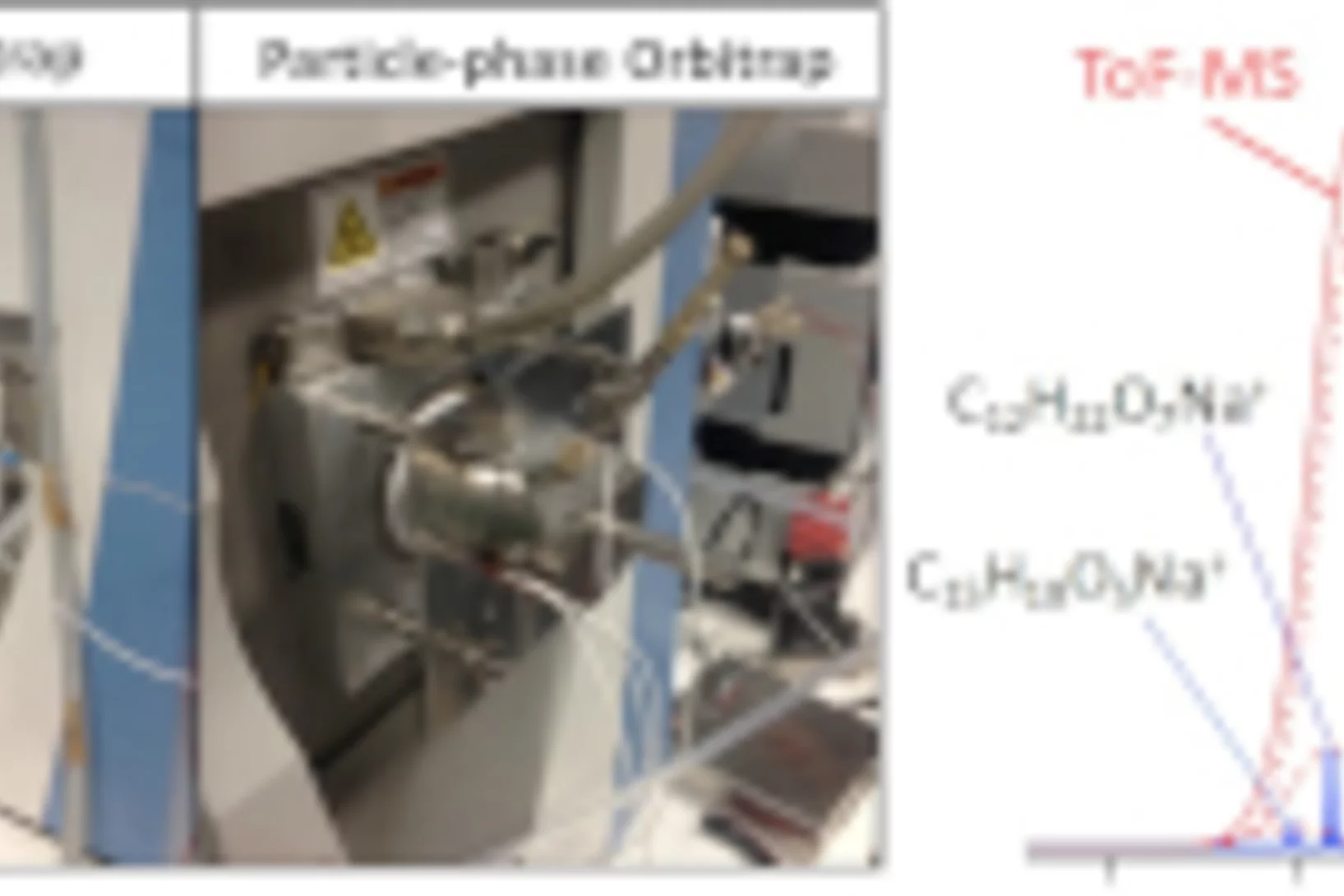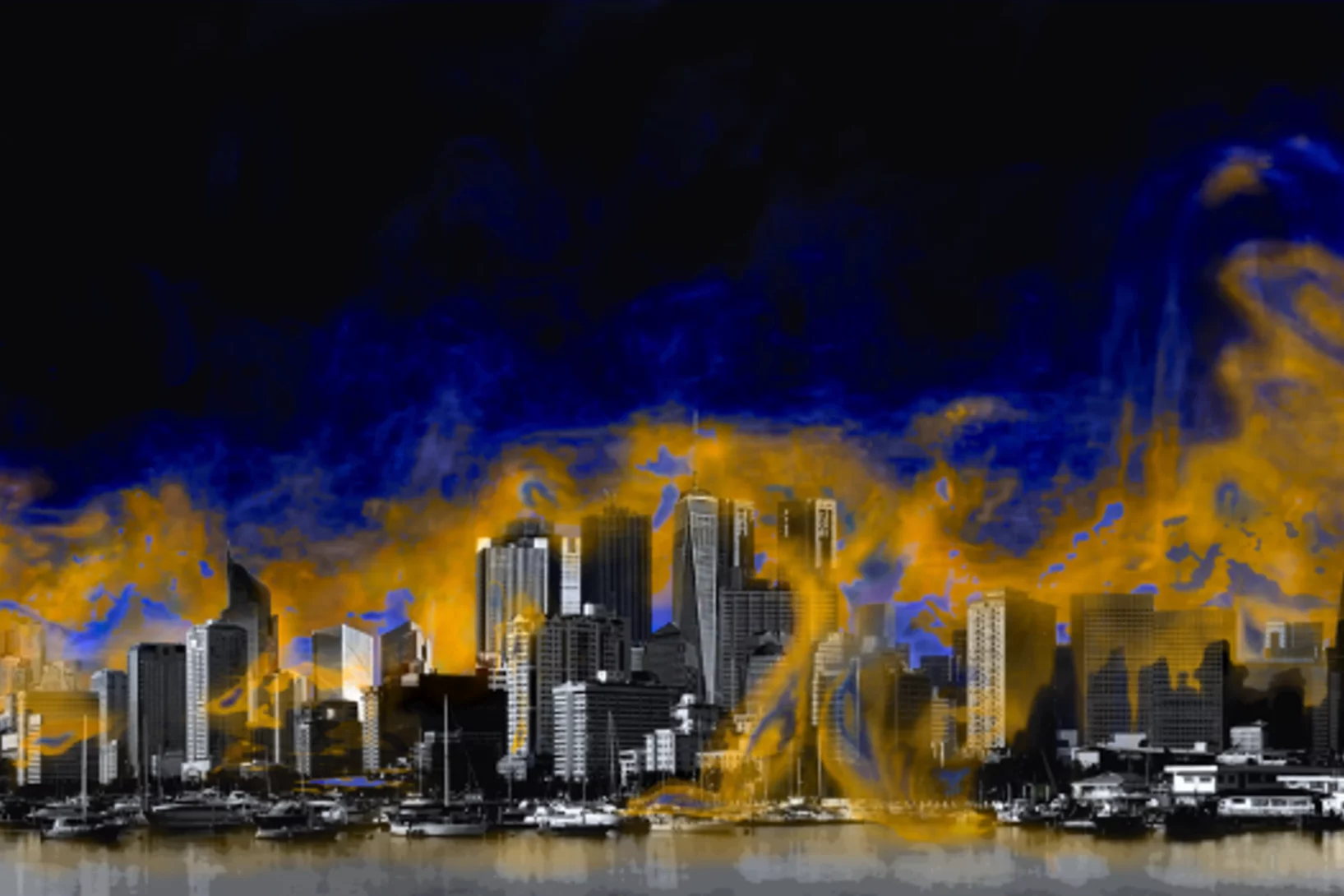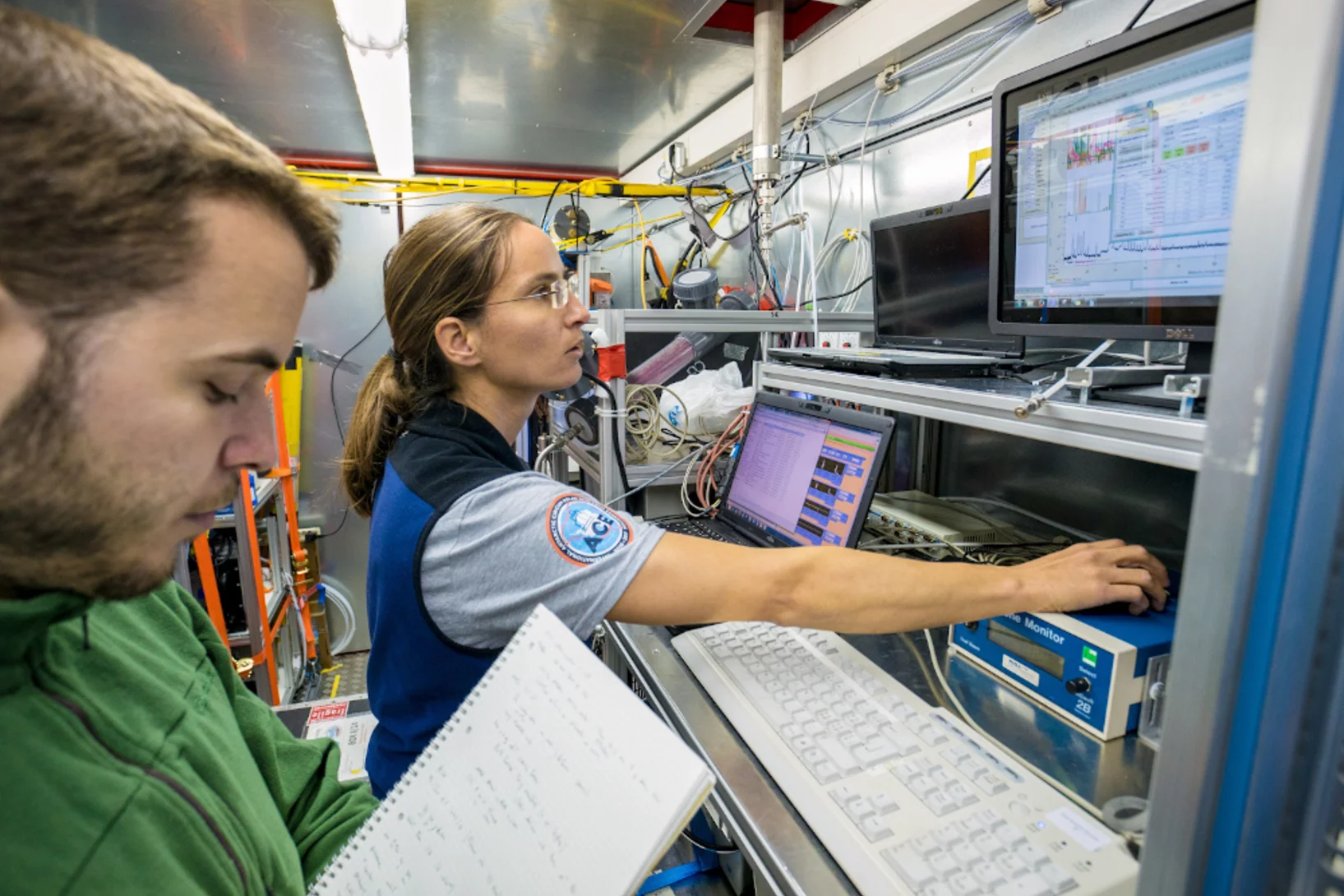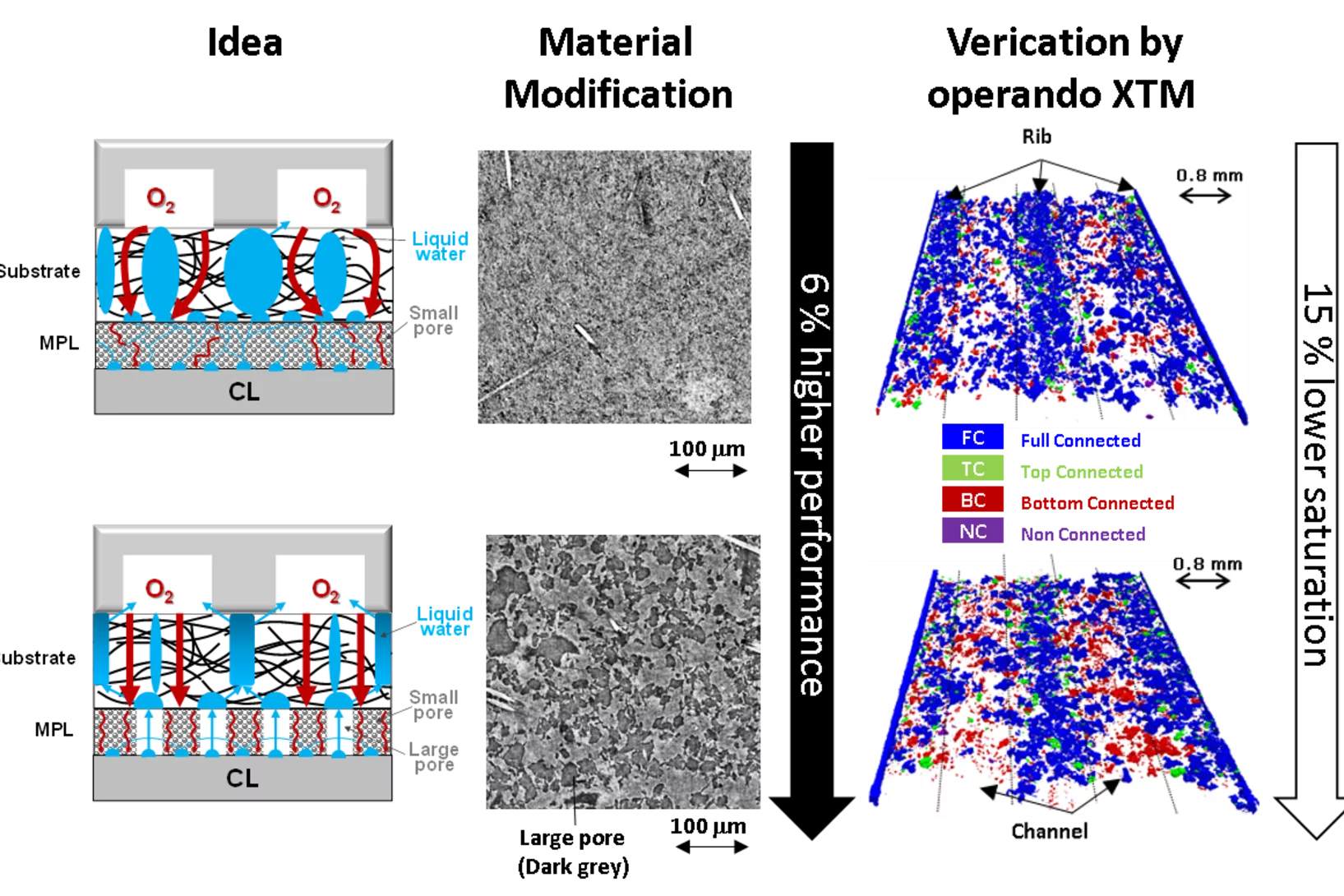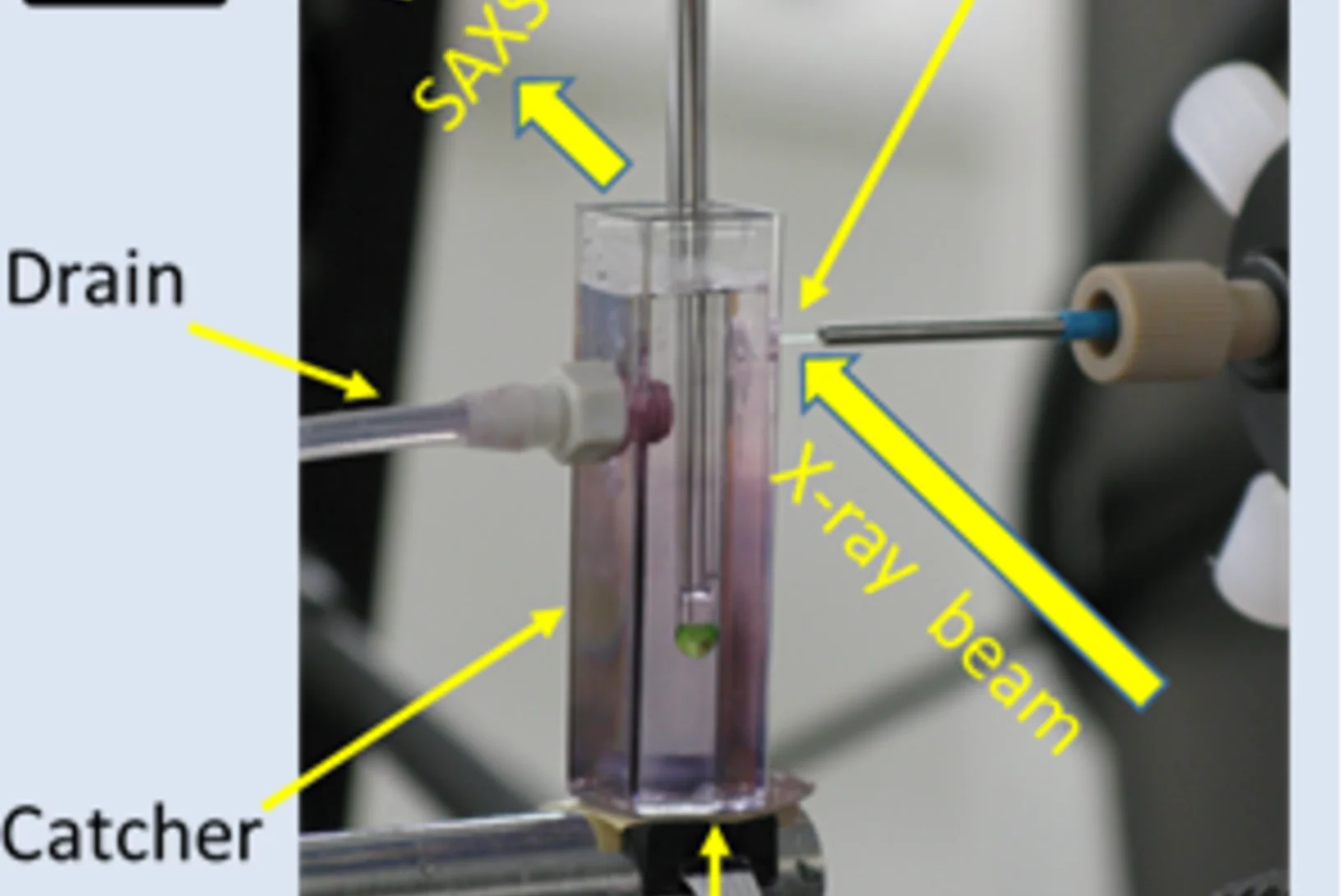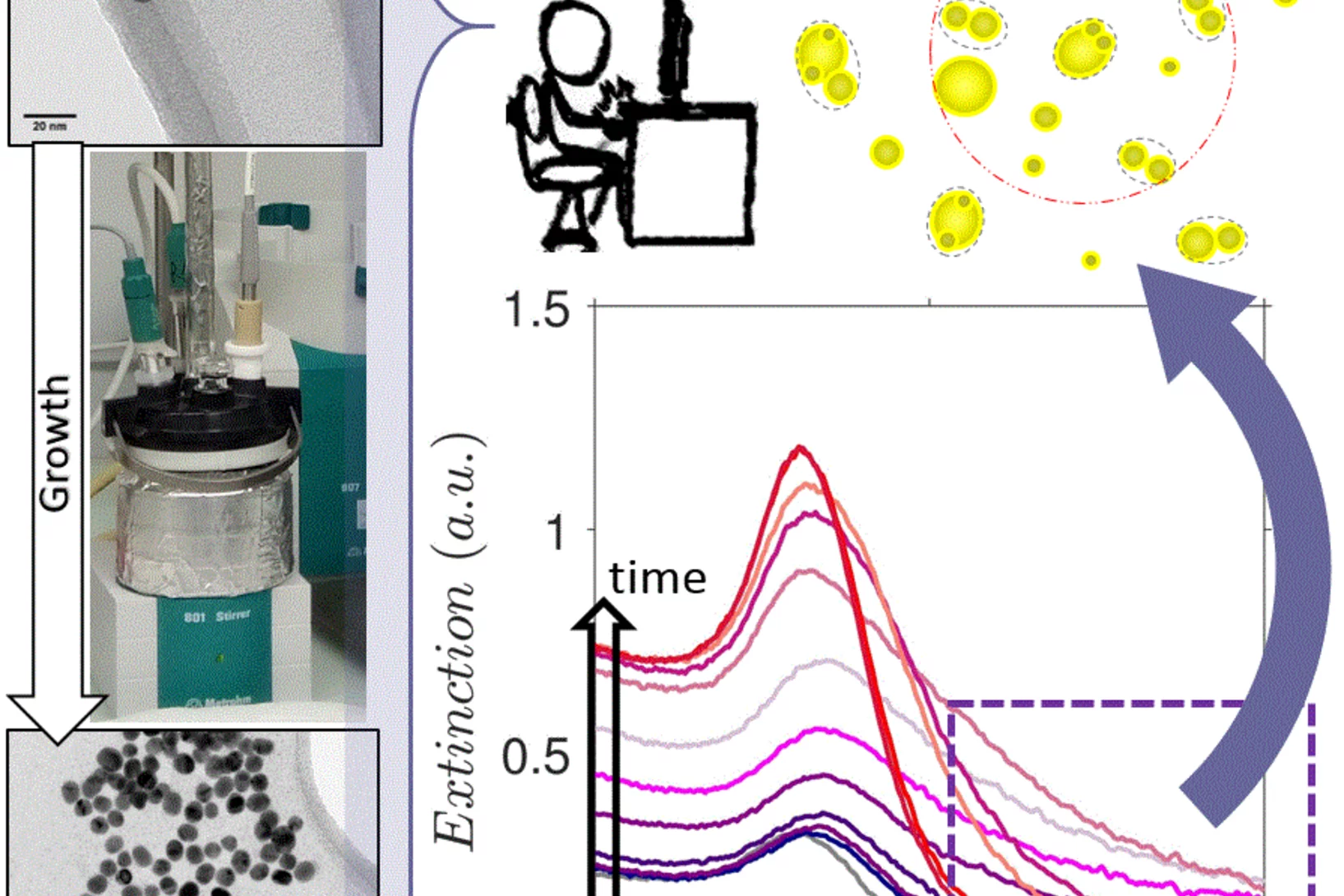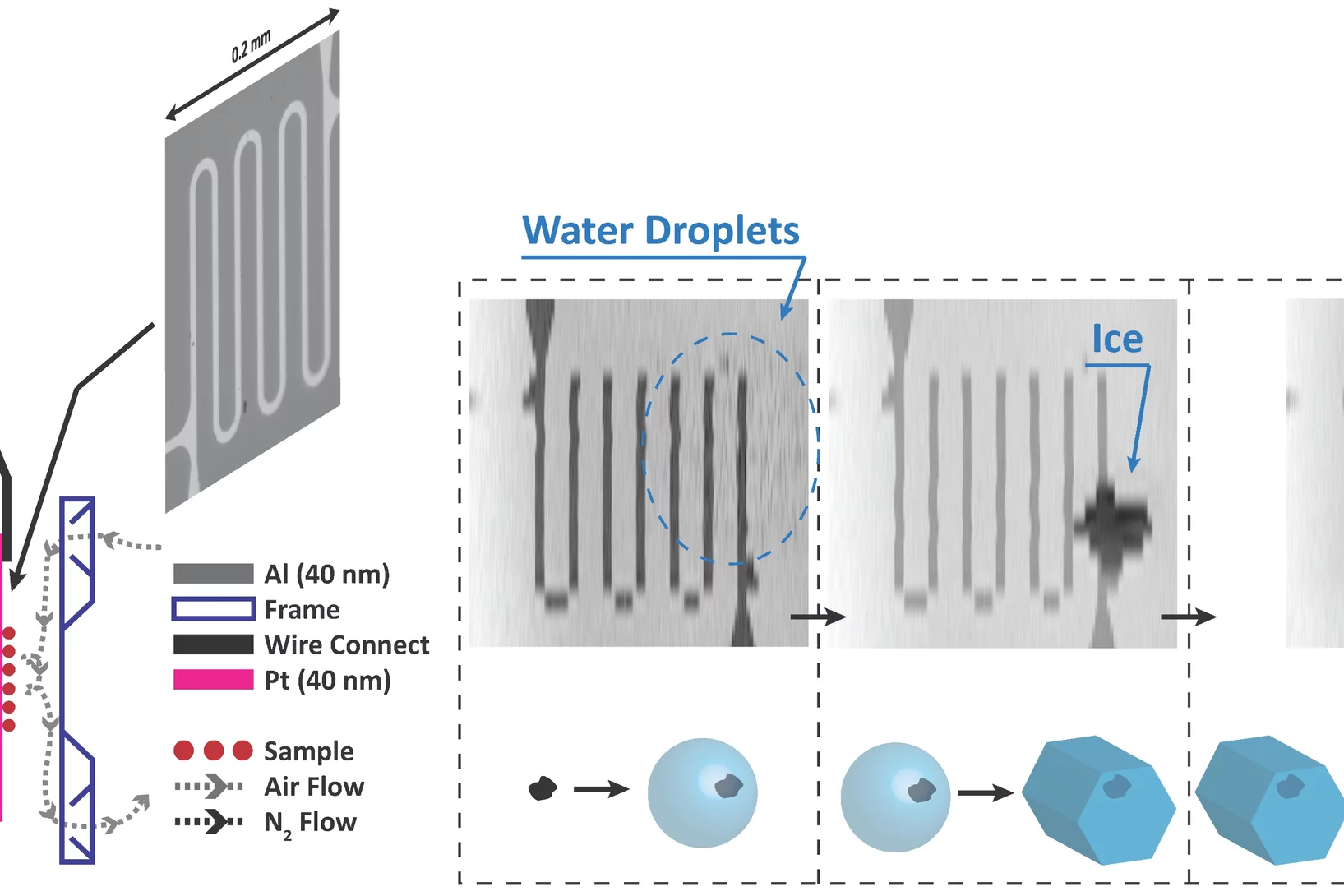Scientific Highlights from Research Division Energy and Environment
(ENE)
Scientific Highlights
Einfache Experimente zeigen: so gut schützen uns Masken und andere Materialien
Spätestens seit Corona ist der Maskengebrauch auch in der Schweiz im Alltag präsent. Doch wie gut können wir uns und andere mit verschieden Materialien vor kleineren und grösseren Partikeln schützen? Das alljährlich durchgeführte PSI Feriencamp bietet Kindern einen spannenden Einblick in die faszinierende Welt der Forschung. In diesem Jahr gingen Kinder an einer Projektstation genau dieser Frage nach. Dabei untersuchten sie, wie gut verschiedene Materialien die im Labor generierten Partikel zurückhalten. Es wurden Textilmasken (im Handel erhältlich, wiederverwendbar, nicht FFP2-zertifiziert), Chirurgenmasken (Einwegmasken, FFP2-zertifiziert), Teefilter, Kaffeefilter, Papiertaschentuch und WC-Papier getestet, und es wurde klar, Maske ist nicht gleich Maske.
Online ultrahigh resolution mass spectrometry for the molecular analysis of the atmosphere
Atmospheric aerosols are considered the single largest uncertainty in assessing the human contribution to global warming and amongst the top five health risks worldwide. Our ability to investigate aerosol sources, their formation processes in the gas-phase, and their societal impacts is largely governed by our capability to measure their molecular constituents in real-time. Researchers at PSI have combined for the first time ultrahigh resolution mass spectrometry with high time resolution and sensitivity for the molecular analysis of aerosols.
Newly discovered rapid particle growth rates may be the answer to the mystery of aerosol formation in urban smog
Aerosols, suspended particles or droplets, play a key role in Earth’s atmosphere’s energy balance. They can also result in smog formation in cities, which leads to low visibility and serious health risks for the population. A recent study published in Nature outlines a newly discovered mechanism that may play a key role in the continued survival of particles in wintertime smog.
Around Antarctica in 90 days to study the pristine atmosphere
PSI researchers have designed and equipped a laboratory container for operation on research ships to undertake comprehensive studies of the chemistry and microphysics of the atmosphere. The floating laboratory was first deployed during the Antarctic Circumnavigation Expedition (ACE) with the aim of characterizing aerosol processes that are relevant for climate change in an atmosphere, which is hardly influenced by human emissions of air pollutants other than greenhouse gases.
Fast operando X-ray tomographic microscopy improves polymer electrolyte fuel cells
Polymer electrolyte fuel cells (PEFC) are a key technology for the decarbonization of automotive mobility. In collaboration with Toyota, it is shown by dynamic, operando X-ray tomographic microscopy, how the liquid water saturation in modified gas diffusion layer materials is reduced.
The imaging data supports the understanding of the underlying mechanisms and explains improved cell performance. Novel instrumentation at the TOMCAT beamline further improves imaging time resolution and allows for scan times as short as 0.1 s.
A third dimension for the nanoscale
Researchers of the Laboratory for Catalysis and Sustainable Chemistry (LSK) from PSI have designed uneven probe supports, which reveal the hidden site of nanocrystals.
Their simple approach allows transmission electron microscopes (TEMs) complete access to the atomic structure of nanomaterials without the need for cumbersome experimental effort.
Matter before solid nucleation under synchrotron light
Investigation on early stage of solid formation from solution, before nucleation, have been carried out at PSI by small angle scattering technique using X-ray light from the Swiss Light Source SLS. The system under analysis was calcium carbonate, a model system archetype of several sparsely soluble inorganic materials and relevant in many field such as CO2 capturing and biomineralization. The experimental setup, the method, and developed theoretical framework can be applied to many other systems and made available for the entire scientific community.
Kinetics and Mechanism of Metal Nanoparticle Growth via Optical Extinction Spectroscopy and Computational Modeling: The Curious Case of Colloidal Gold
An overarching computational framework unifying several optical theories to describe the temporal volution of gold nanoparticles (GNPs) during a seeded growth process is presented. To achieve this, we sed the inexpensive and widely available optical extinction spectroscopy, to obtain quantitative kinetic data. In situ spectra collected over a wide set of experimental conditions were regressed using the hysical model, calculating light extinction by ensembles of GNPs during the growth process. This model rovides temporal information on the size, shape, and concentration of the particles, and any electromagnetic interactions between them. Consequently, we were able to describe the mechanism of GNP growth and divide the process into distinct genesis periods. We provide explanations for several longstanding mysteries, e.g., the phenomena responsible for the purple-greyish hue during the early stages of GNP growth, the complex interactions between nucleation, growth and aggregation events, and a clear distinction between agglomeration and electromagnetic interactions. The presented theoretical formalism has been developed in a generic fashion so that it can readily be adapted to other nanoparticulate formation scenarios such as the genesis of various metal nanoparticles.
Chemically mapping ice forming particles
Scientists have just nucleated ice in an X-ray microscope for the first time and they created chemical maps of those responsible.

